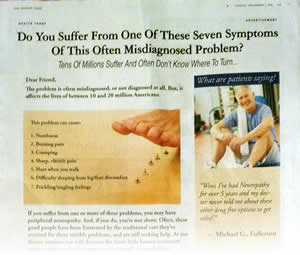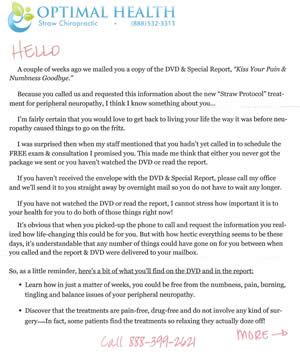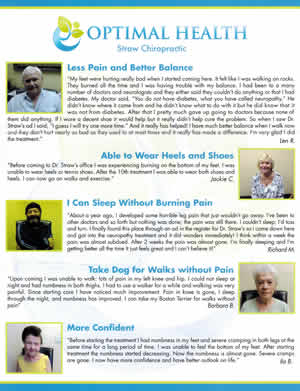Full-page ads promoting free dinner seminars addressing the topic of “Non-surgical, drug-free approach to relief from Peripheral [sic] Neuropathy [sic]” appeared last year on at least nine Sundays in the main news section of the print edition of The Los Angeles Times. The seminars were scheduled at various restaurants in Orange County, Los Angeles County, and Inland Empire.
The Los Angeles Times claims a Sunday circulation of 962,192 and a readership of two million for the Sunday main news section. The cost of full-page ads in the main section of Sundays varies, but I was given a quote of $32,500 by an advertising consultant for the paper.
The ads included on their upper left, in small print, the words “HEALTH TODAY” and on the same line—though perhaps less noticeably—at the far right of the page the word “ADVERTISEMENT.” In a much larger font was the headline:
Do You Suffer from One Of These Seven Symptoms Of This Often Misdiagnosed Problem?
It was followed by this subtitle:
Tens of Millions Suffer And Often Don’t Know Where to Turn
The ads indicated that discussion at the seminars would include:
- What REALLY causes Peripheral [sic] Neuropathy [sic]
- Three crippling effects of Neuropathy [sic]
- Dangers associated with medications
- The Straw Protocol, which utilizes proprietary treatment methods and provides outstanding results for people who suffer from Neuropathy
The ads warned that seating at the dinner seminars would be limited and instructed readers to call for a reservation and to provide the RSVP code in the ad (apparently to enable the marketer to keep track of where each caller found out about the seminars). Next to the toll-free number provided in each ad was the name of the advertiser: OPTIMAL HEALTH, and then below it in much smaller, easily overlooked print: Straw Chiropractic. Keeping the print small for the word chiropractic is a clever promotional tactic; many prudent consumers would not be inclined to seek chiropractors for peripheral neuropathy treatment.
I called the advertised phone number, but since I said (honestly) that I didn’t have any of the seven symptoms of neuropathy listed in the ad, I would not be permitted to attend any of the free dinner seminars. (I was disappointed to not qualify for a free dinner since I’m on a tight budget just like many other critics of health pseudoscience who get falsely accused of being paid off by Big Pharma.)
However, the ad offered a second phone number to call in order to obtain more detailed information and answers to common questions about the Straw Protocol without a having to indicate one’s symptoms and attend a seminar. I called the number, 888-858-9291, and left a message with my name and address along with a request that the advertised “Free special report and DVD” be mailed to me. The materials arrived a few days later.
The promotional DVD
The title on the label of the DVD is “Our Patients Speak” followed by “The Neuropathy Treatment Center by Optimal Health Straw Chiropractic.” On the left side of the label is the instruction: “Call Today for a FREE Consultation and Evaluation!” (The exclamation mark here is a strong signal of hype.) On the right side of the label, it exclaims “$249 Value!” I guess that’s supposed to be the value of the consultation and evaluation rather than the value of the DVD.
On the bottom of the label is a number to call to find the location to find the nearest location of the Neuropathy Treatment Center. I called and was told there are five locations. Three are in Los Angeles County: Glendale, Placentia, and Gardena. The other locations are in Corona (Inland Empire) and Lake Forest (Orange County). I learned from the website of the practice, optimalhealthsc.com, that there is also an “affiliated practice,” Restore Medical Group Greathouse Chiropractic Inc., with locations in San Diego and Sunnyvale.
The DVD plays for just a few minutes and consists of five neuropathy patients expressing satisfaction with treatment from the Neuropathy Treatment Center and dissatisfaction with medications previously prescribed for them from other doctors. Many people can be persuaded to try treatments based on such testimonials, but testimonials regarding clinical benefits are not trustworthy. Consumers often fail to consider that the experiences described in testimonials may poorly represent the experiences of most people who try a new advertised treatment. If the patients actually experienced relief from their neuropathy while they were receiving Straw Protocol treatment, it doesn’t necessarily mean that the relief is attributable to the treatment. And it’s important to recognize that some chiropractors who have solicited testimonials from patients have been found to provide incentives and/or discounts to patients who offer testimonials.
The cover letter for the mailing comes with instructions to watch the enclosed DVD before reading the enclosed special report. Advertisers recognize that this sequence tends to make their messages more persuasive. It’s likely that people tend to be less suspicious of information provided in literature after they have been exposed to relatable role models who appear sincere while offering encouraging stories.
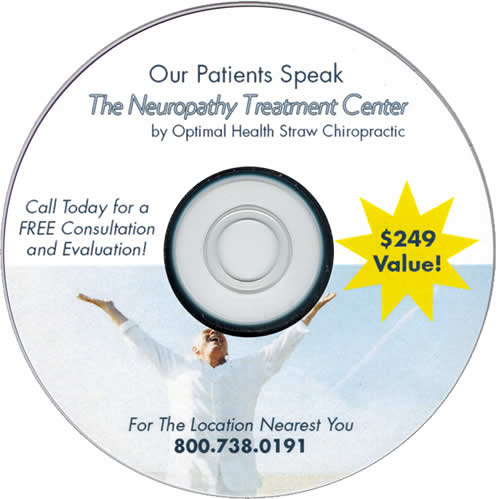
The special report
The tabloid layout of the report reminds me of the many advertising mailers made to look like health newsletters that are sent to people who get on mailing lists of quacks. I wrote about such “Advertising Mailers in Disguise” in 2001 when I served as president of the National Council Against Health Fraud, Inc.
The front cover of the report is made to look official with the words “Optimal Health’s” in the upper left-hand corner, “Summer 2014” in the upper right hand corner, “Natural Health Journal” as a heading, and “Practical Solutions for Optimum Health & Healing” as a sub-heading. The rest of the cover shouts out its hype with lots of bold lettering, enlarged lettering, varied font styles, varied colored lettering, all-caps, italicized lettering, exclamation points, a photo of an older woman along with a quotation that supposedly comes from her, and a concluding sentence in title case. Here’s the text:
A REVOLUTIONARY new way of treating peripheral neuropathy can help you throw away your pills and…
“KISS YOUR PAIN & NUMBNESS GOODBYE”
- BANISH THE NUMBNESS!
- Sleep restfully without tossing & turning or stabbing and shooting pain waking you!
- End those weird ‘skin-crawling’ feelings!
- No more limitations on your activities!
- Regain your good balance!
- Live the life you deserve!
“I now have feeling in my feet that I have not felt in over twenty years!!”
Thousands Have Already Experienced This Advanced Method of Treatment and Found Freedom From The Vise-Like Hold Neuropathy Had Over Their Lives!
See Inside [along with a curved arrow as a guide to turn the page]
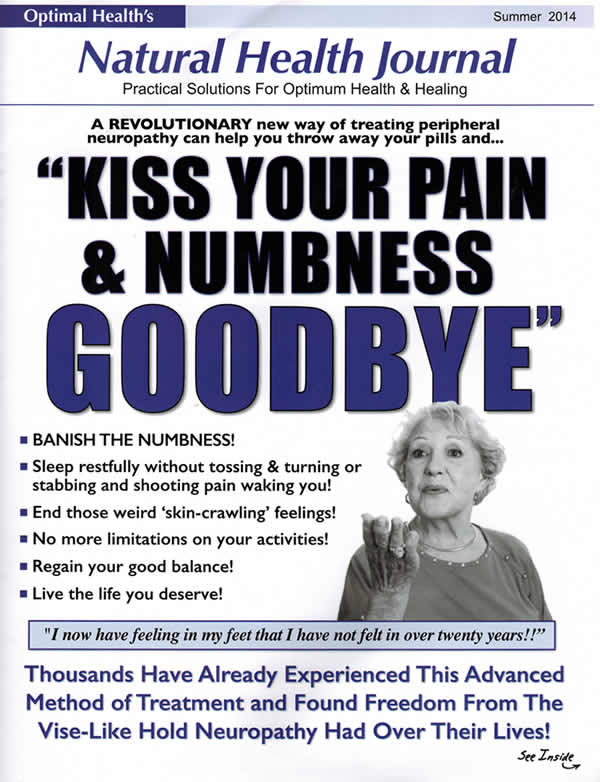
I suggest that health consumers should be wary of tabloid-style messages telling patients they can have their greatest hopes realized from a supposedly REVOLUTIONARY treatment.
The inside of the report consists of eight pages (page 2 through 9) along with a back cover offering tabloid-style hype similar to what appears on the front cover. Page 2 consists of a letter to the reader that indicates the treatment protocol “has already helped more than 3000 people over the last three years!” In an attempt to overcome any reasonable skepticism, the letter includes this paragraph:
This is neither far-fetched [sic] hope nor over-the-top hype like you’ve seen thrown around by ‘Miracle Pill” hucksters.
Well, I’ll be the judge of that. And so will you if you read on.
Page 3 consists of three testimonials and an introduction to “Dr. Phil Straw, D.C.” (I previously pointed out in my discussion of the supposed experts interviewed in the execrable first part of the video “The Quest for the Cures…Continues” that it’s a bad sign when practitioners are introduced redundantly with “Dr.” before their names and a degree after their names.)
I learned that Dr. Straw is the author of the 2014 book Neuropathy: How to Relieve Foot Numbness, Tingling, Burning, and Cramping Without Drugs or Surgery, he earned his “under-graduate [sic] degree from the University of California Santa Barbara in 1988 and doctor [sic] of Chiropractic in 1995” (from an unidentified institution, but clearly not UCSB), that he’s a “[s]ought-after speaker on peripheral neuropathy and the importance of maintaining optimum health through natural medicine and proper nutrition” (and I would be similarly sought-after if I also offered free dinners with my free seminars), and that he’s the “Creator of THE STRAW PROTOCOL.”
By the way, I am following THE LONDON PROTOCOL in writing about THE STRAW PROTOCOL (and you are supposed to be very impressed indeed by the capital letters in the name of my protocol).
Part of THE LONDON PROTOCOL is to check for disciplinary actions against practitioners who advertise aggressively. I found that, in November 2012, California’s Board of Chiropractic Examiners issued a citation to Philip Arthur Straw for his advertisements and Straw paid his fine in full.
I contacted a staff member serving California’s Board of Chiropractic Examiners and obtained a copy of the citation sent to Dr. Straw, which remains a public record. The section of the letter with the heading “Cause of Citation” reads:
On July 27, 2012 the Board received a complaint from N. F. alleging that the claims made in your advertisements, “Which of These Warning Signs Could Lead to Foot Amputation?” and “Don’t Let Your Neuropathy Put You in a Wheel Chair” are misleading to the public. The advertisements and your response to the Board’s Inquiry were forwarded to a chiropractic expert consultant for review. The Board expert opined that you have used worst-case clinical scenarios as headlines in your advertisements, and in doing so you have engaged in the use of misrepresentations, distortions, sensational or fabulous statements, or which have a tendency to deceive the public. In doing so, you are in violation of CCR section 311 advertisements.
In addition, the Board’s expert opined that your self-appointed designation as a “leading regional authority” and “expert” in such matters is a sensational, distorted statement that has a tendency to deceive the public. The Board expert added that the Board of Chiropractic Examiners does not recognize such expertise, and you have not demonstrated that you possess any diplomate status that might lend truthfulness to such a claim. In doing so, you are in violation of CCR section 311 advertisements.
As mentioned by Los Angeles Times business and consumer columnist David Lazarus in a column published August 25th 2014, the fine was only $500. That slap on the wrist tells you how seriously the Board of Chiropractic Examiners takes CCR section 311. Although the ads from Straw in 2014 didn’t have the same fear-mongering headlines and claims of expertise as the ads mentioned in the 2012 complaint, the claim that the Straw Protocol provides outstanding results should be viewed as a CCR section 311 violation.
Another part of THE LONDON PROTOCOL is to check for publication of clinical research findings in the scholarly literature. A Google Scholar search on “Philip Straw” revealed no such publications. No surprise! I see little reason to consider the Straw Protocol as an “Advanced Method of Treatment” as the ads in 2014 characterized it.
Page 4 of the special report consists of a brief description of peripheral neuropathy in simple language followed by criticisms of the drugs prescribed the medical community to treat peripheral neuropathy. The discussion includes the misleading suggestion that medical doctors treat peripheral neuropathy only to manage symptoms, with drugs and sometimes surgery. It disregards how standard treatment begins with addressing conditions underlying peripheral neuropathies and includes mechanical aids for symptom management. It includes a common medical establishment-bashing trope:
Perhaps the reason you may not have heard of the treatment options available for your peripheral neuropathy (like the method described on the next couple of pages of this report) is because of the stubbornly-held notion that, when it comes to medical treatments that don’t involve a needle or a pharmaceutical company’s pill, the establishment community can be ‘a bit set in their ways.’
Then again, perhaps this is a straw person (or straw establishment community) attack and the popular press has ignored THE STRAW PROTOCOL because it’s just one of the hundreds of non-evidence-based gimmicks for healing promoted by chiropractors. If there was compelling clinical research evidence indicating that the Straw Protocol is safe and the advertising claims made for it are valid, I think we would have heard about it (especially from the Straw-supported Los Angeles Times).
(A fact sheet from the National Institute of Neurological Disorders and Stroke provides a much more informative description of peripheral neuropathy than does Straw’s report. The fact sheet describes the classification, symptoms, causes, diagnostic tests, and treatment, for peripheral neuropathy.)
Pages 5 through 8 include eleven more testimonials, more hype from Dr. Straw, and a description of the four steps of the Straw Protocol (also described on Straw Chiropractic’s website).
- Step 1 (Stimulate) of his protocol uses an electronic device that, we are told, has approval for a number of pain indications, but is not a transcutaneous electrical nerve stimulation device. It’s good to be wary of devices that promoters fail to identify by name. When practitioners are secretive about their treatments, they sidestep scrutiny. I’m reminded of a catchphrase of Dana Carvey’s Church Lady character: “How convenient!”
- Step 2 (Rejuvenate) is to increase overall circulation by utilizing light emitting diode (LED) therapy. The description of Step 2 also includes a reference to investigations by NASA. Such references are common in the promotion of non-validated health gimmicks.
According to the BlueCross BlueShield of Tennessee Medical Policy Manual’s statement on LED therapy (reviewed most recently on 9/11/14):
Light emitting diode therapy for the treatment of conditions / diseases, including but not limited to diabetic peripheral neuropathy, lymphedema, non-healing wounds, tendonitis, capsulitis, and pain is considered investigational. (Emphasis in original.]
Investigational means not appropriately promoted in free dinner seminars to recruit paying patients. Another key point in the statement:
Scientific evidence in peer review literature is lacking regarding the use, safety, improvement or effectiveness on health outcomes for light emitting diode therapy.
- Step 3 (Activate) “uses different frequencies of vibration on different areas of your body which further stimulates new capillary and nerve regeneration.” It would appear that Straw’s patients are shaken (if not stirred), but it isn’t clear that they’re pickin’ up good vibrations, excitations, or healing.
Exposure to some sources of vibration is one of many recognized causes of peripheral neuropathy. That doesn’t mean other sources of vibration provide relief. A review article published in 2015 on whole body vibration (WBV) for rehabilitation of peripheral neuropathies concluded:
The results of this literature search suggest insufficient evidence to assess the effectiveness for the effects of WBV on neuropathic pain, muscle strength and balance in patients with peripheral neuropathies, as there is a clear lack of methodologically high quality research on the subject.
In other words, WBV is a non-validated treatment.
- Step 4 (Empower) is described as “truly THE KEY to not only reaching your desired level of pain-free health, but staying there for as long as you like.” It amounts to “nutritional education and proper supplementation” against chronic inflammation.
Inflammation is a complex bodily response to infection and injury that can be either beneficial or harmful. While chronic inflammation appears to play a role in the development of some chronic diseases, it is unclear that any special supposedly anti-inflammatory regimen of foods and dietary supplements can provide clinically-significant relief to peripheral neuropathy patients.
Dietary supplements are frequently tainted with drugs and often do not contain ingredients in doses listed on their labels. Paying more for practitioner-recommended (or -dispensed) supplement formulations provides illusory assurance.
On page 9 of the report is this pitch (bolding in original):
If you call and schedule your appointment for your own exam within 7 days of receiving this package, I will waive the entire $249 fee for you.
It’s followed by an offer of a free copy of Straw’s book at the exam.
I didn’t call within seven days. Soon after I received a letter from Straw Chiropractic renewing the offer for the free exam if I called within two to three days and the book would still be available for me.
After failing to make the second deadline, I received a second notice which began “Hello…?” followed by a letter beginning with the words: “You’re smart. I can tell.” The letter went on to express surprise that I hadn’t called. The free diagnostic exam offer was still available along with the free book, but “is just not going to be an option for very much longer.” The letter came with a flyer featuring eleven more testimonials.
I waited for months to call to find out about costs of the Straw Protocol. The initial free exam and consultation offer was still available.
Costs to patients
Consumers should be wary of high-pressure sales pitches for limited time offers. Practitioners who place full-page newspapers ads need to work hard to get patients into their clinics. They need to recoup their investments in advertising (e.g., newspaper ads) and direct selling (e.g., dinner seminars) and then earn enough from fees charged to patients to make good money.
I reached a sales representative over the phone for Straw Chiropractic and was told that if I were a candidate for the treatment (that I really had peripheral neuropathy and it wasn’t too advanced), it would cost me $500 to $10,000 for five to fifteen weeks of treatment. Insurance doesn’t pay for any of the treatment. The representative wasn’t sure whether the quoted figures include the cost of purchasing dietary supplements.
Advertising in 2015
Thus far in 2015, in some, but not all Sundays, ads of varying sizes for the Straw Protocol have appeared in the main section of The Los Angeles Times. The most recent advertisements (as of this writing), on February 15th and 22nd were smaller than a quarter of a page and included an invitation to call for the free DVD and report. None of the newer ads included invitations to free dinner seminars.
However, I noticed on another page in the main section of the paper a half-page ad for free dinner seminars from the NEUROPATHY RELIEF CENTER of Long Beach Presented by Ballerini Chiropractic. The pitch is very similar to the pitch used by Straw Chiropractic. I will need to investigate further to find out the source of marketing campaigns used by chiropractors to promote peripheral neuropathy treatments services.
Other chiropractors who promoted free dinner seminars
Dr. Straw’s marketing campaign featuring free dinner seminars reminds me of similar recent campaigns by other chiropractors. For example, as I described previously:
[Brandon Lee Babcock, D.C.] pitched a bogus nutritional cure for diabetes. But, as reported December 9th, 2013 by The Salt Lake Tribune, his scheme bilked older adults in Utah of thousands of dollars. To recruit patients, he offered free gourmet dinners where attendees were shown video testimonials and given information about Babcock’s supposed “diabetes breakthrough.” He tricked patients into signing papers that established lines of credit with Chase Health Advance and he maxed out the $6,000 limit when patients tried to withdraw from his services. Some patients testified that Dr. Babcock and his staff misled them into signing up for credit without their knowledge or consent. Others said Babcock refused to provide refunds despite a 30-day opt-out guarantee and a promise of 100% satisfaction.
In 2008, the Utah Department of Occupational and Professional Licensing (DOPL) issued a “non-disciplinary cease-and-desist order” after finding that he advertised treatments for conditions he wasn’t qualified to treat: depression, multiple sclerosis, fibromyalgia, learning problems, attention deficit disorder, allergies, hormone replacement relief, sleep problems and memory loss.
In April 2012, the DOPL suspended Babcock’s chiropractic license by emergency order. In August 2012, West Jordan City revoked Babcock’s business license. The Salt Lake Tribune noted, however, that he continued to lead seminars promoting his program to reverse Type II diabetes.
In October 2013, a jury convicted him of six third-degree felony counts of exploiting a vulnerable adult. In December 2013, he was sentenced to six months in jail.
Colorado-based chiropractors Brandon Credeur, D.C. (a classmate of Brandon Babcock at Parker College of Chiropractic) and his wife Heather Credeur, D.C. also used newspaper advertising to attract diabetics to seminars following free gourmet dinners to promote their “functional endocrinology” treatments to diabetics and people with symptoms of low thyroid function. Jann Bellamy has discussed both Babcock and the Credeurs previously on ScienceBasedMedicine.
A September 2011 complaint from Colorado’s Board of Chiropractic Examiners against Brandon Credeur charged him with violations of the Board’s rules regarding scope of practice; misleading, deceptive, false, or unethical advertising; untrue, deceptive or misleading practices regarding unproven and/or unnecessary services; and record keeping requirements. But instead of losing his chiropractic license, as many of his former patients had hoped, following a hearing in an administrative court room, Credeur’s case ended in a settlement in which he admitted to nothing and agreed to keep better records.
On June 19th, 2013, the Colorado Medical Board sent an order to Brandon and Heather Credeur to cease and desist practicing medicine without a license. That same day, they declared bankruptcy to the dismay of former patients who have sued them to get their money back. A ruling from an administrative law judge is anticipated in response to the Credeur’s challenge to the Medical Board’s order.
The Credeurs remain licensed to practice chiropractic in Colorado.
Candice McCowin, an Irvine, California chiropractor ran newspaper ads claiming breakthrough treatments for diabetes and other chronic illnesses to be discussed at free dinner events. In March 2014, the California Board of Chiropractic Examiners cited the “free diabetic guides” she distributed as misleading ads. As noted in a column by David Lazarus, “McCowin paid a $500 fine and agreed to ensure that future ads ‘not be construed as misleading or deceiving to the public.” Dr. McCowin, I will be looking for your ads.
A few final thoughts
Advertisements that appear in The Los Angeles Times (or any other newspaper) should never be presumed to be trustworthy. The screening processes used by advertising departments of news organizations are typically inadequate to assure that ads are not false or misleading.
The $500 fine for “advertising in a potentially deceptive manner and for portraying himself as a neuropathy expert” that Dr. Straw paid in 2012 was no serious deterrent. I consider recent advertisements by Straw Chiropractic in newspapers and in mailers to patients to be misleading.
The direct selling approach of free dinner seminars and free initial consultations can be seductive. People often respond to acts of apparent kindness and generosity with a sense of obligation to reciprocate. But reciprocation to a sales pitch for a non-validated treatment protocol is unlikely to lead to relief and is likely to be costly.
I don’t expect that licensing boards in California are inclined to take appropriate action to protect consumers from inappropriate advertising of health services. But consumers need to file complaints and they need to let legislators know that they object to practitioners who deceptively advertise health services for financial gain and to licensing boards that fail to adequately protect the public.
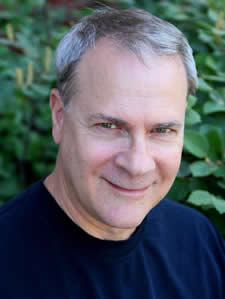
William M. London is a professor of public health at California State University, Los Angeles and a co-author of the sixth, seventh, eighth, and ninth (2013) editions of the college textbook Consumer Health: A Guide to Intelligent Decisions. He is one of two North American editors of the journal Focus on Alternative and Complementary Therapies, associate editor of the free weekly e-newsletter Consumer Health Digest, and co-host of the Credential Watch site. Most of his recent writings about extraordinary claims for health products and services can be found at Swift, published by the James Randi Educational Foundation, and the Skeptic Ink Network.

